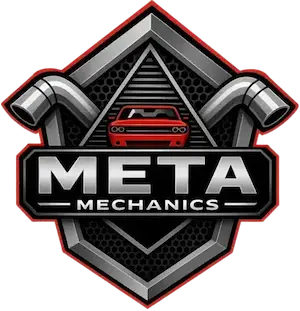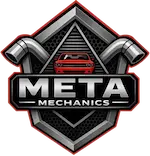At Meta Mechanics, we specialize in providing expert automotive services, ensuring your vehicle operates at its highest potential. Recently, we completed a Turbocharger Repair on a Range Rover Evoque in Dubai, where our technicians discovered several critical issues affecting the vehicle’s performance. Below is a detailed breakdown of the problems we identified and the solutions we provided to restore the turbocharger to its optimal condition.
Identified Issues:
- Worn-out Turbocharger Bearings
- Problem: The turbocharger bearings were severely worn out, leading to excessive play in the turbo shaft. This wear resulted in a loss of efficiency, causing the turbocharger to produce less power, which impacted the overall engine performance, fuel efficiency, and acceleration.
- Solution: We disassembled the turbocharger, replaced the damaged bearings with high-quality OEM replacements, and reassembled it to restore smooth rotation and improved turbo performance. This repair helped the turbocharger operate at optimal efficiency.
- Leaking Turbo Oil Seal
- Problem: A leaking oil seal was found, which allowed oil to escape from the turbocharger housing. This could lead to oil contamination in the intake or exhaust system, and in severe cases, engine damage or smoke from the exhaust.
- Solution: We replaced the faulty oil seal with a new, durable seal to prevent oil leaks and ensure proper lubrication within the turbocharger. This repair ensured that the turbocharger would continue to function smoothly without the risk of oil contamination.
- Damaged Turbocharger Wastegate
- Problem: The turbocharger’s wastegate, responsible for controlling the boost pressure, was found to be sticking and not functioning properly. This can lead to fluctuating boost pressure, causing the engine to either lose power or experience overboosting, both of which affect the vehicle’s overall performance and efficiency.
- Solution: We inspected the wastegate and found it to be damaged. We replaced the wastegate actuator and repaired the components to ensure proper control of the boost pressure. This restoration improved the vehicle’s acceleration and throttle response.
- Clogged Turbocharger Vane Mechanism (Variable Geometry Turbo)
- Problem: In the case of a variable geometry turbo (VGT), the vanes inside the turbocharger were clogged with carbon buildup, which caused the turbo to operate inefficiently. This resulted in reduced engine power, poor fuel economy, and turbo lag.
- Solution: We performed a thorough cleaning of the turbocharger vanes to remove the carbon buildup and restore their functionality. After cleaning, the vanes moved freely, improving turbo response and performance.
- Excessive Exhaust Backpressure
- Problem: The vehicle had excessive exhaust backpressure due to a clogged exhaust system, which was putting additional strain on the turbocharger. This condition can lead to turbo failure over time if not addressed promptly.
- Solution: We inspected and cleaned the exhaust system, particularly the catalytic converter and exhaust pipes, to reduce the backpressure. This allowed the turbocharger to operate more efficiently and restored the vehicle’s power and acceleration.
Range Rover Evoque Turbocharger Inspection and Diagnostics
Range Rover Evoque Turbocharger Removal and Installation
Range Rover Evoque Turbocharger Rebuild or Replacement
Range Rover Evoque Turbocharger Shaft and Bearing Inspection
Range Rover Evoque Wastegate and Actuator Inspection
Range Rover Evoque Turbo Oil Line Inspection and Replacement
Range Rover Evoque Intercooler and Piping Inspection
Range Rover Evoque Turbocharger Seal Replacement
Range Rover Evoque Exhaust Gas Temperature Sensor Check
Range Rover Evoque Turbocharger Boost Pressure Testing
Range Rover Evoque Check for Oil Leaks and Fixing
Range Rover Evoque Turbo Performance Tuning and Calibration


